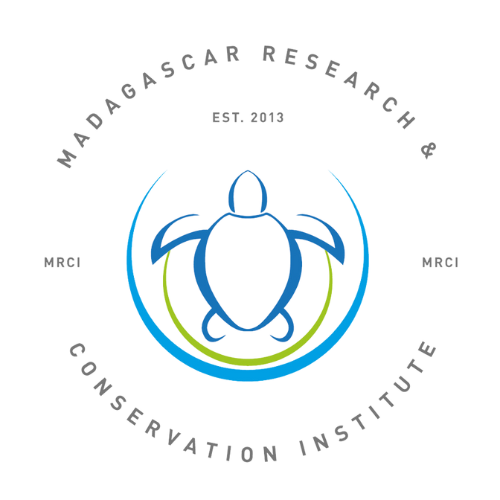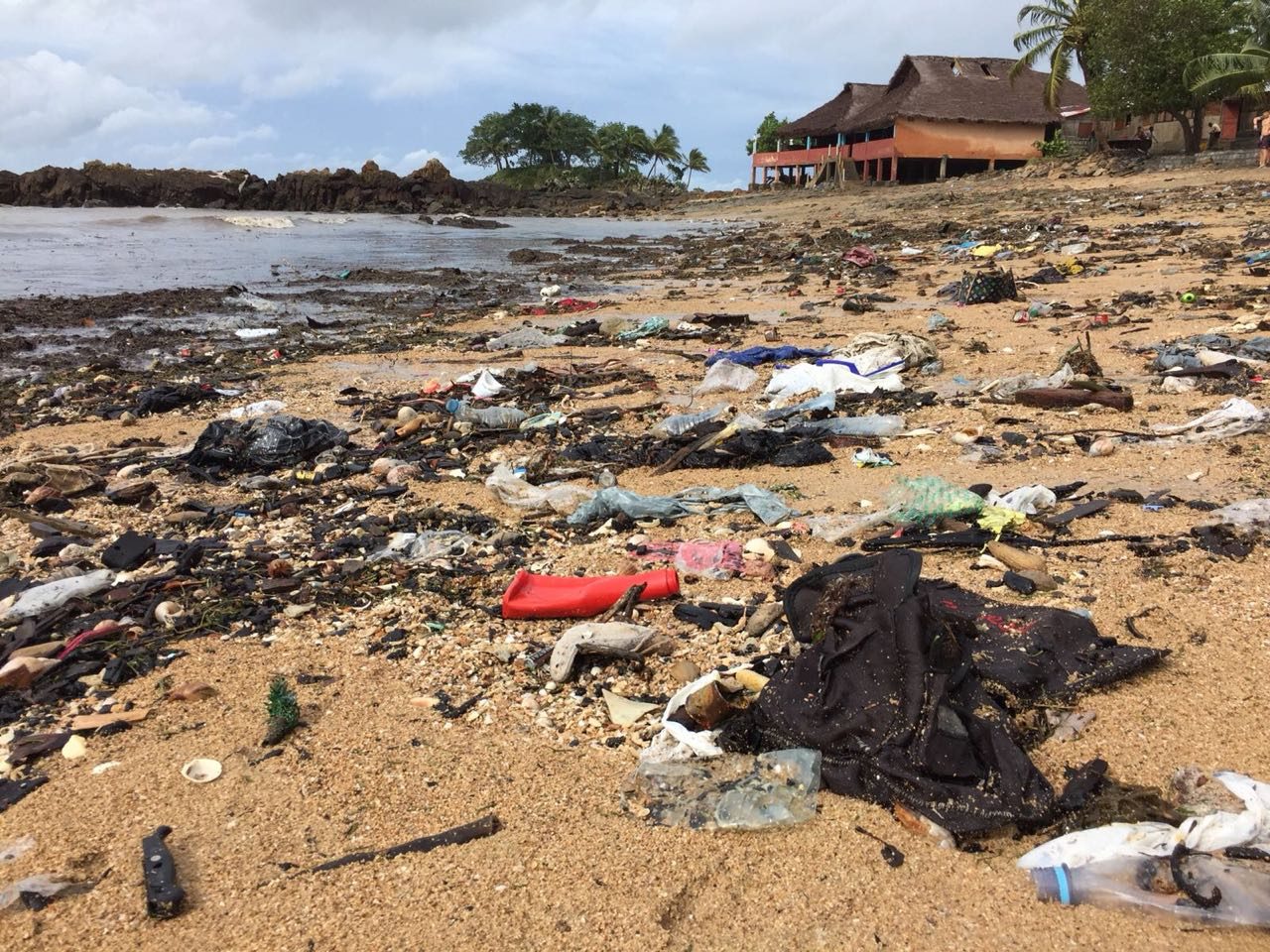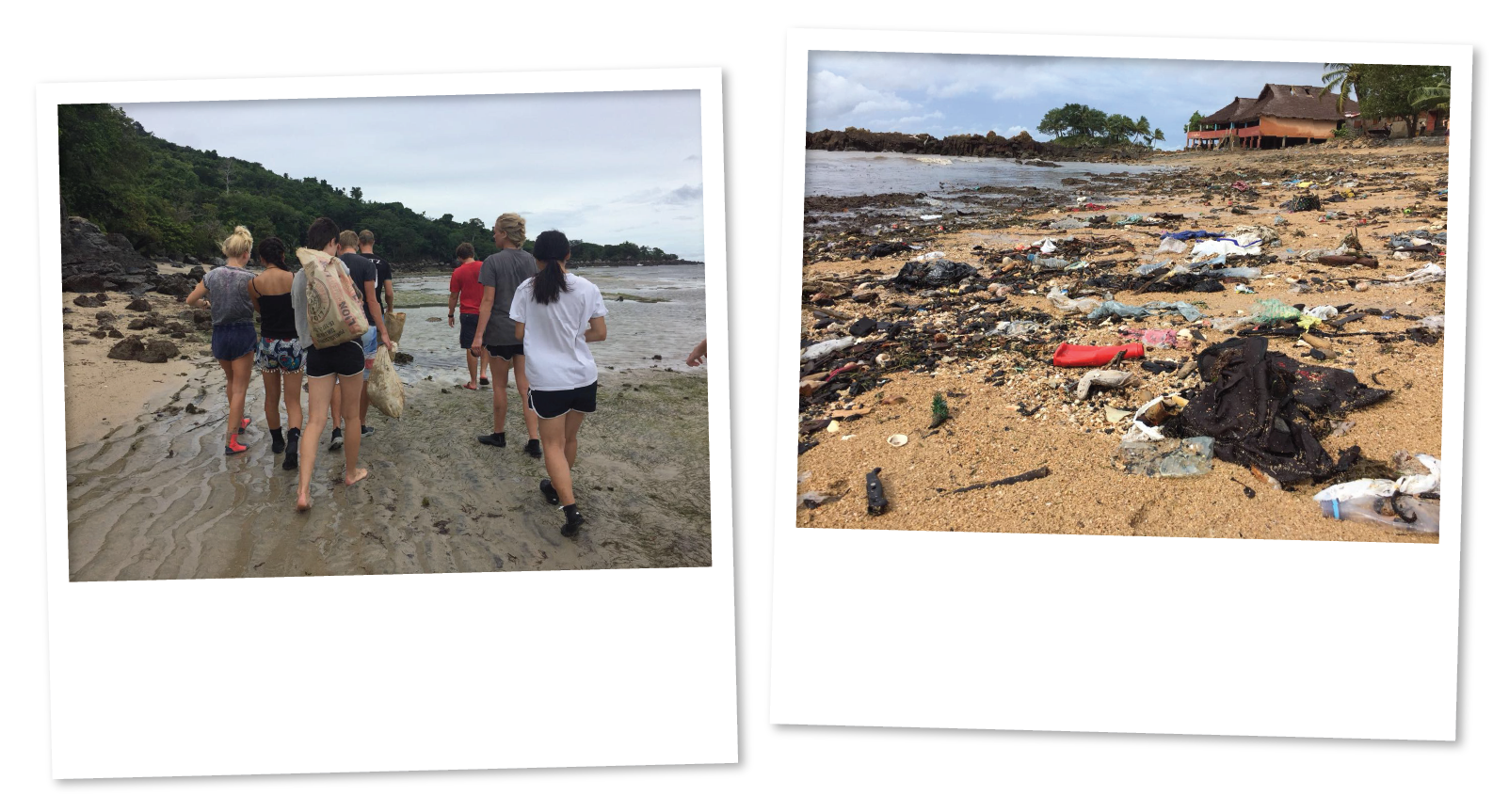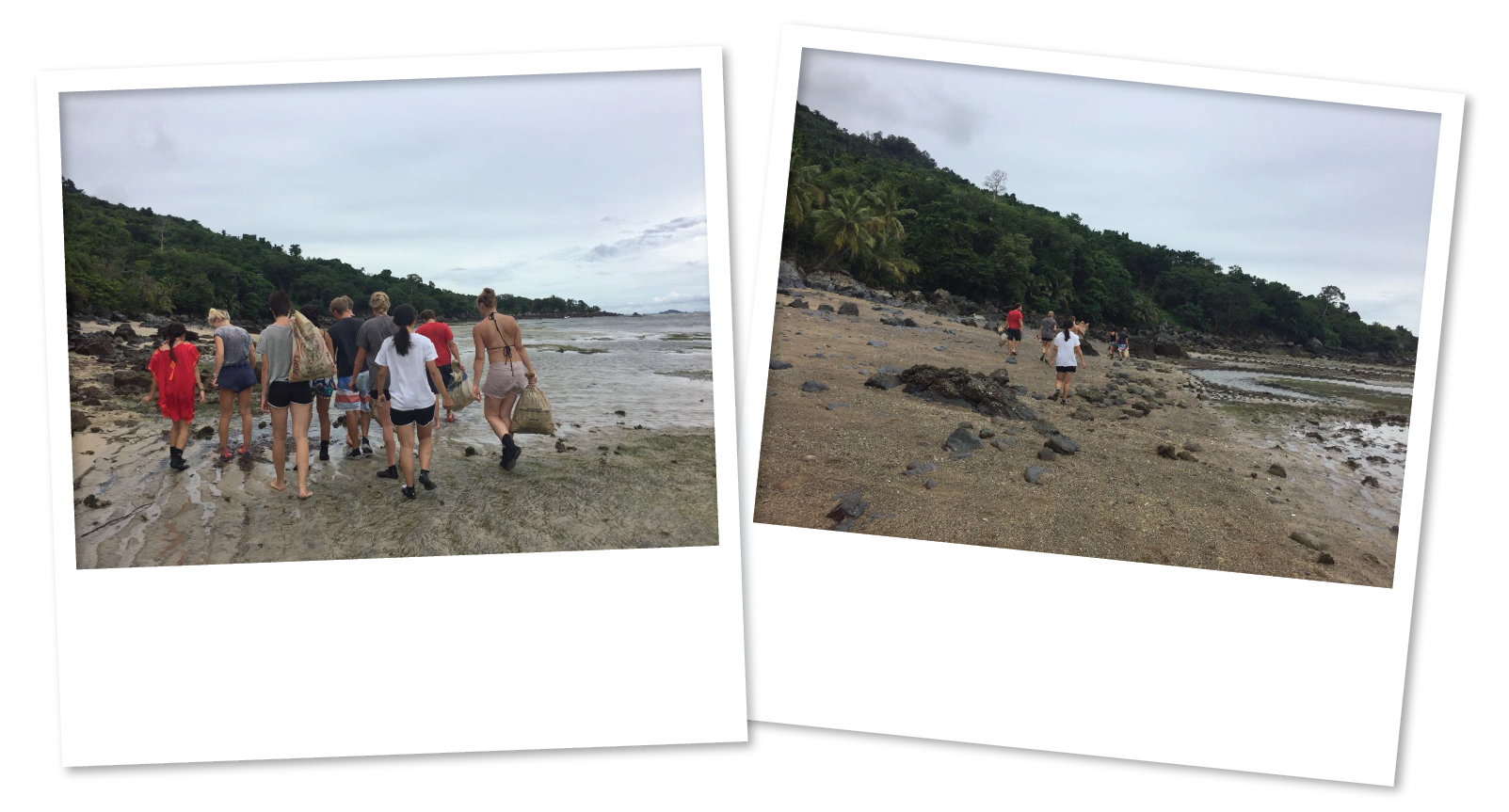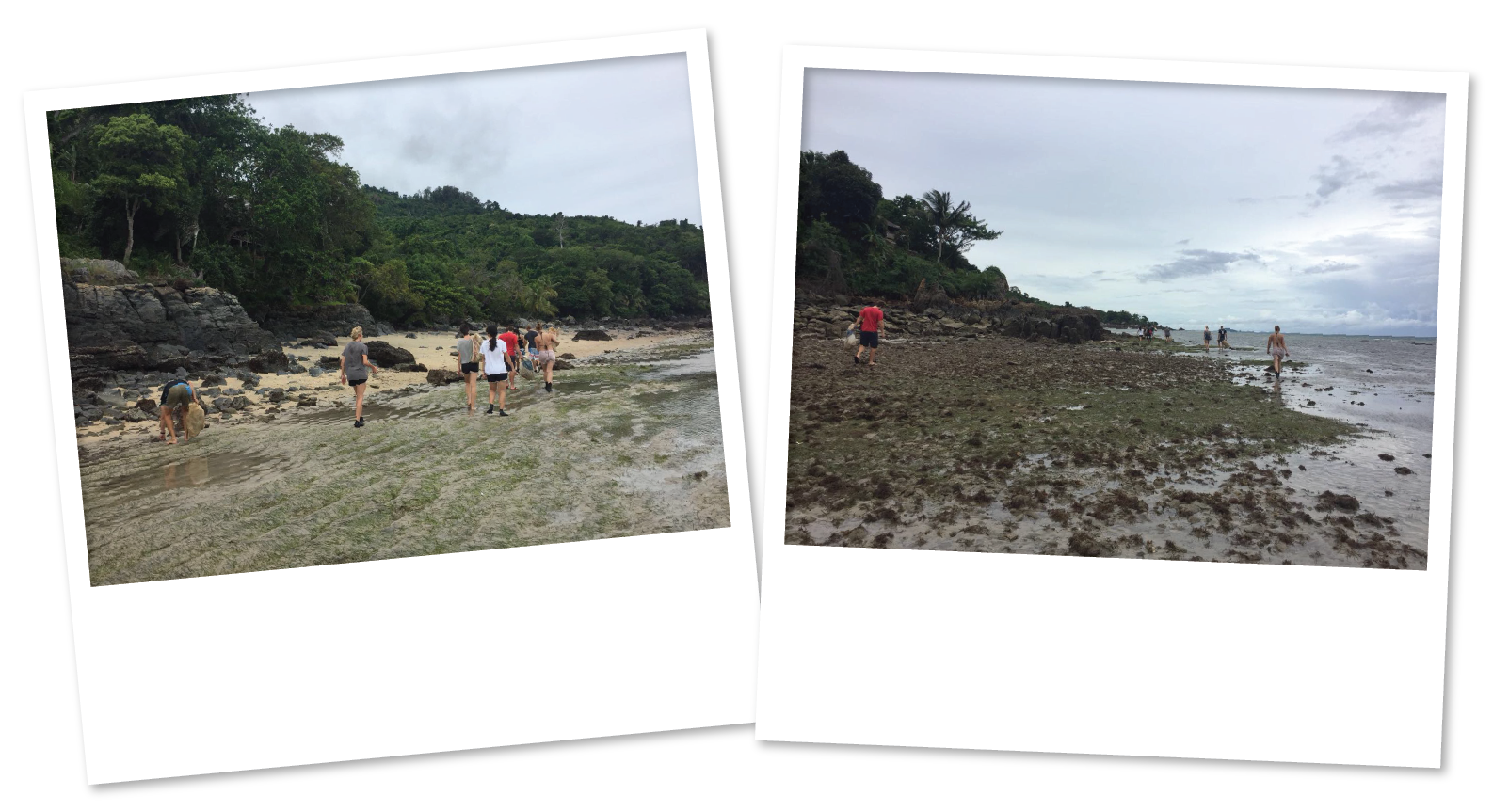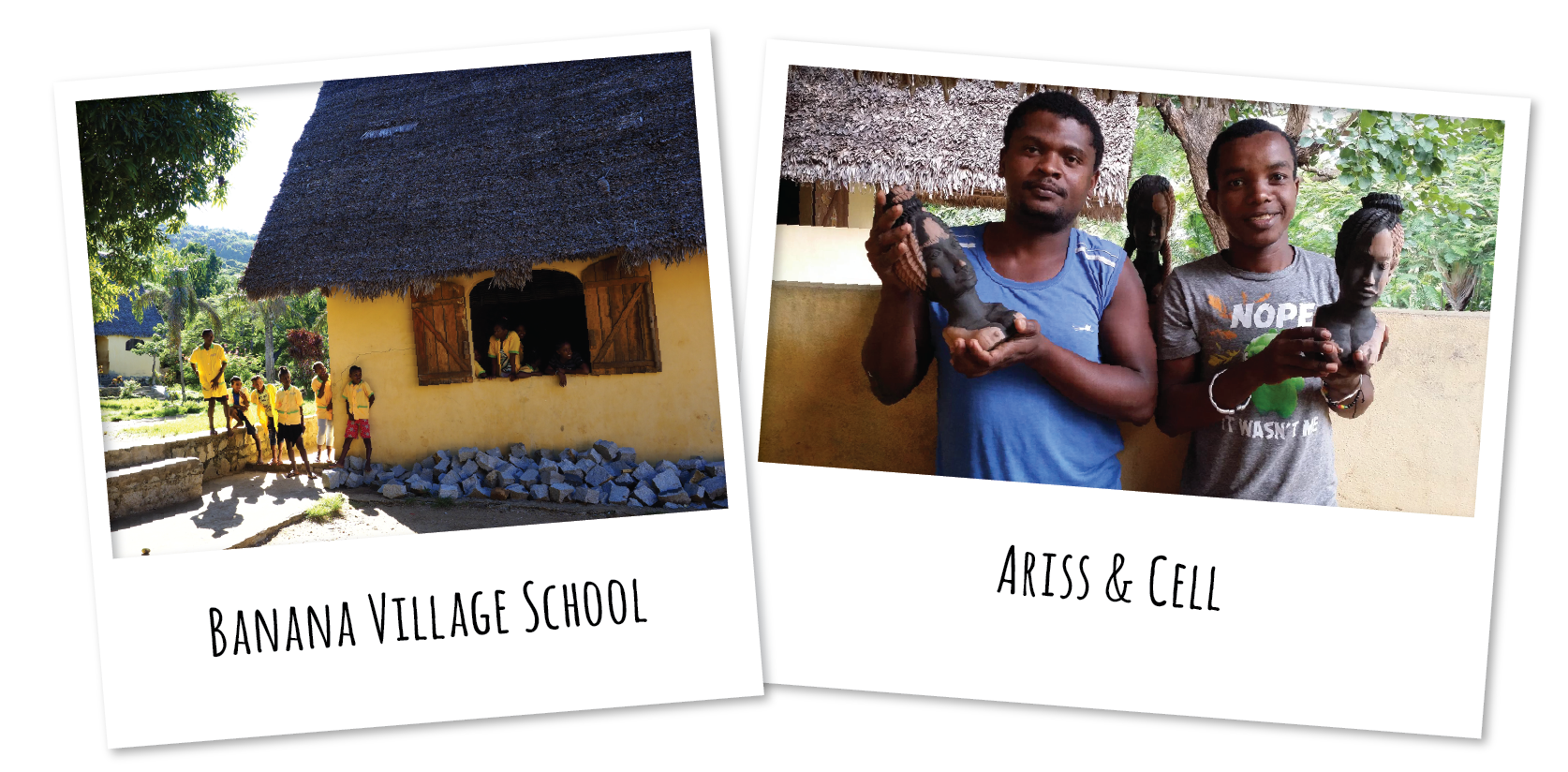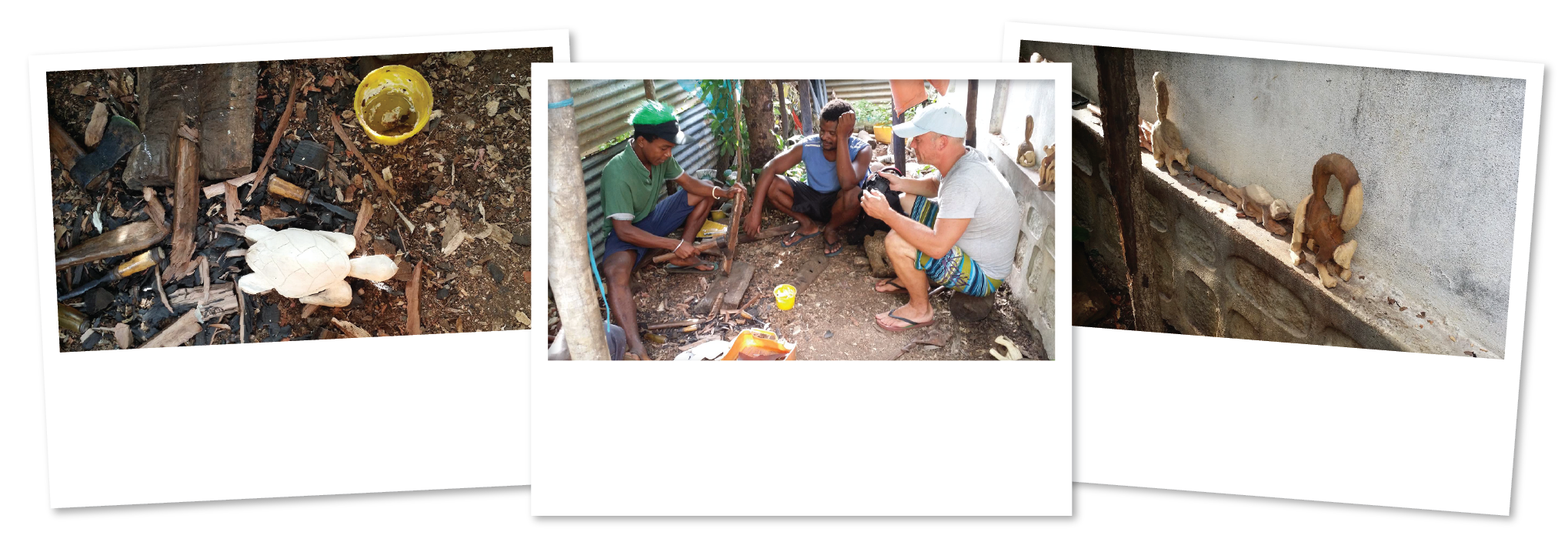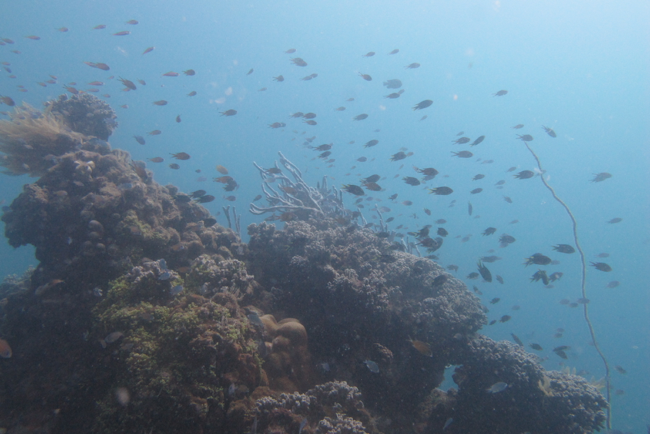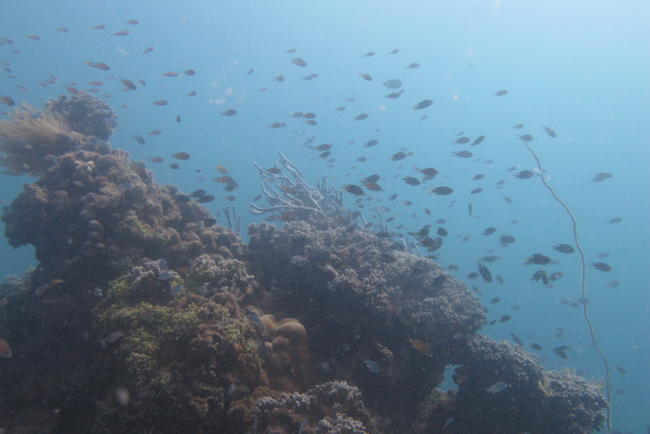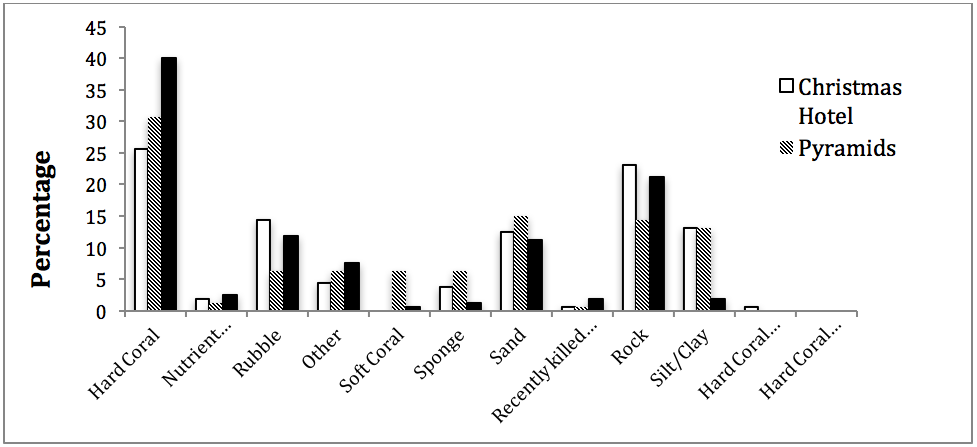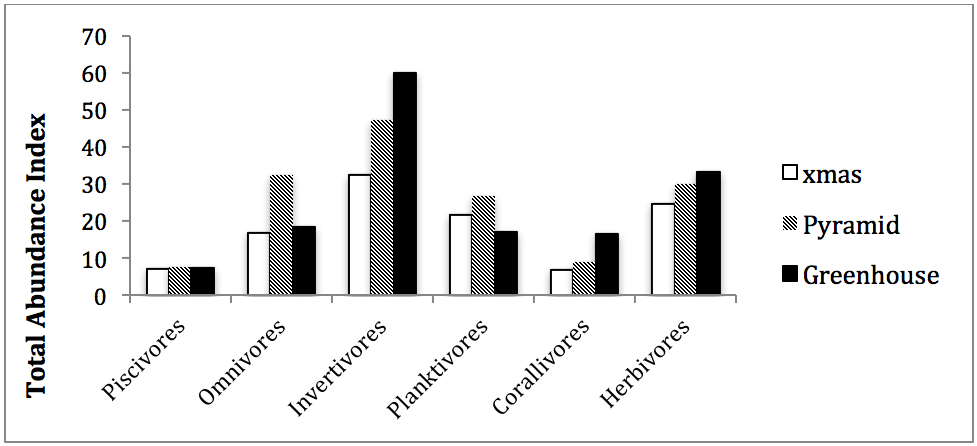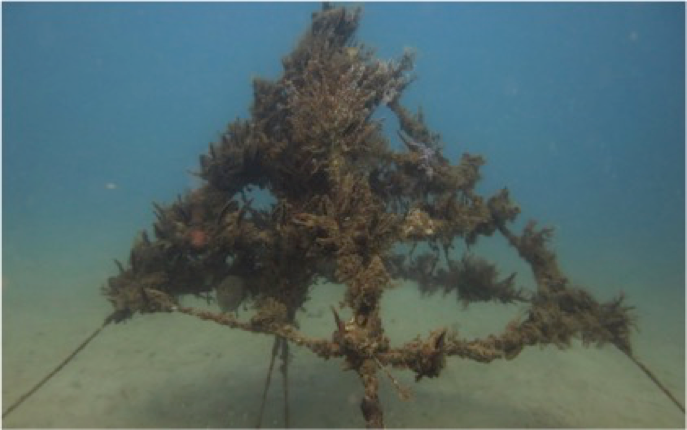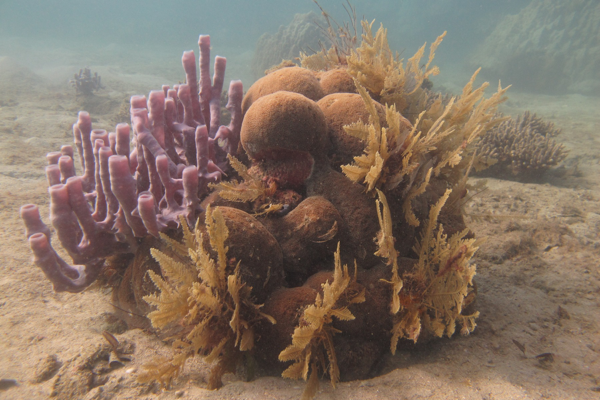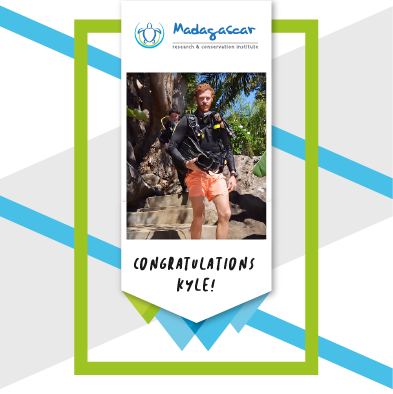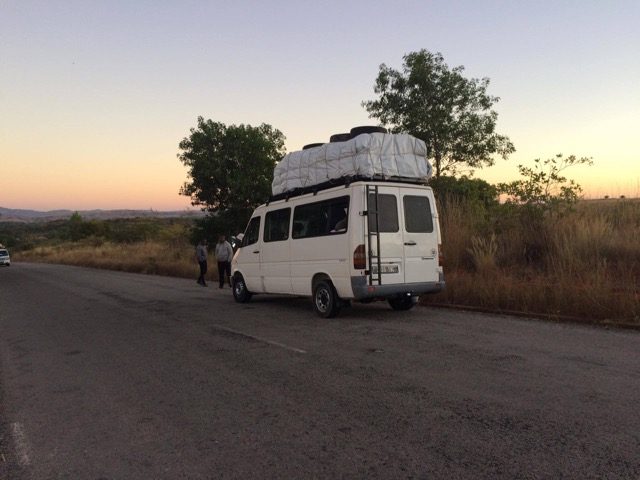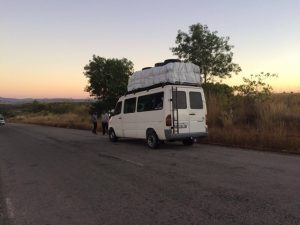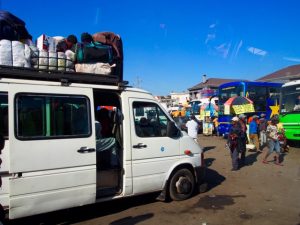Beach Clean-Ups on Nosy Komba
By Alex Flucke, MRCI SCUBA Instructor
“Another Beach Clean…?”
A typical day on the Marine Conservation Program here at MRCI consists of scuba diving, snorkeling, entering data we collected while scuba diving and snorkeling, and getting set up to go diving and snorkeling. One would not typically think that a marine activity could be done on land, walking with our feet, not typically wearing a swimsuit but alas, the beach clean-ups. A verb, in which one walks along a beach with, in our case old rice sacks, and picks up any piece of man made trash they can get their hands on. This activity, in my humble opinion is one of the most important, if not the most important thing we do weekly on marine.
A typical phrase I hear at board reading, when volunteers hear that we will be doing a beach clean tomorrow is, “Another one?” or “But we did one yesterday!” I then jump on to my soap box, metaphorically, and shout “Yes we are!” You may be asking yourself why is this scuba instructor so passionate about beach clean-ups? I am passionate about them because they are both important, and needed here on Nosy Komba.
Participating in local beach clean-ups is one of the most visible forms of conservation and can take only an hour or two. A beach is covered in trash when you arrive, you leave probably a little dirty and smelly yourself, but it is obvious that you made an immediate difference. There is less trash that can choke our waterways as well as the creatures that call that body of water their home. Studies also show that people who participate in just one of the beach clean-ups have increased well-being (this was proven scientifically but I won’t get into the nitty-gritty numbers of it all), feel more confident in the ecosystem they cleaned, increased marine awareness and pro-environmental intentions, and most importantly are way more likely to participate in other beach clean-ups.
So, in conclusion, sure beach clean-ups help your local flora and fauna significantly, but you get a huge boost of well being for every piece of litter you squat down to grab. You may not come to Madagascar to volunteer with MRCI to participate in beach clean-ups, but you may leave with a cool beach backpack or clothing item you found on one (please wash before you wear or use)!
Also, if you are interested in looking into the article I spoke about it is called, “Can Beach Cleans Do More Than Clean-Up Litter? Comparing Beach Clean-Ups to Other Coastal Activities.” By Kayleigh J. Wyles, Sabine PAhl, Matthew Holland, and Richard C. Thompson (2017) http://journals.sagepub.com/doi/full/10.1177/0013916516649412.
